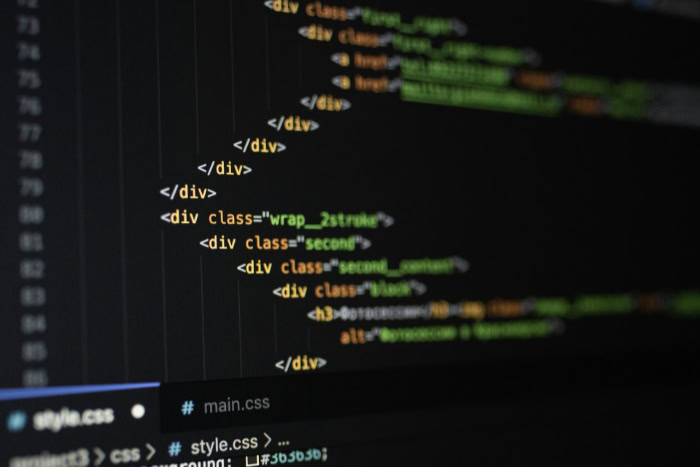HTML vs. CSS: Everything That Sets Them Apart

Building a website might seem like a complex puzzle, but it all starts with two essential tools: HTML and CSS. These technologies form the bedrock of every site you visit, shaping both structure and style in unique ways.
For anyone new to web development, design, or even those curious about how web pages come alive, grasping the distinct roles of HTML and CSS opens the door to creative and effective web projects. By breaking down how these languages work separately and together, you will gain the clarity and confidence needed to bring your ideas to life online.
Core Functions and Purpose
Building a website involves two fundamental aspects: creating meaningful content and presenting that content in an appealing way. HTML and CSS serve these two different but complementary roles.
HTML shapes the content’s skeleton, arranging text, images, and other elements into a logical order. CSS steps in to define how that structure looks, adding color, style, and layout to transform plain content into an engaging visual experience.
HTML: Content Structure
HTML organizes the core material of a webpage using semantic tags that define the purpose of each piece of content. Headings, paragraphs, and lists give clear meaning to text, making it easier for browsers and search engines to interpret the page’s hierarchy.
Semantic markup also improves accessibility, allowing screen readers to navigate content efficiently. Beyond text, HTML includes elements to embed media such as images, videos, and audio, enriching the content and making it more interactive.
Its role focuses purely on the logical arrangement and meaning of all these pieces, without concern for how they appear visually.
CSS: Visual Presentation
CSS handles the visual side of a webpage, applying style to the structured content provided by HTML. It controls colors, fonts, spacing, and other design elements that define the page’s look and feel.
More than just decoration, CSS shapes the user experience by organizing content into visually appealing layouts using modern techniques like Flexbox and Grid. These tools allow for flexible, responsive designs that adjust smoothly to different screen sizes.
CSS turns the plain structure into a polished, user-friendly interface that captures attention and improves readability.
Technical Syntax Comparison
Working with HTML and CSS means learning two unique styles of code. Each language uses its own syntax to define the way web content is structured and styled.
Recognizing their differences makes it easier to read, write, and troubleshoot code, especially as projects grow in complexity. HTML lays out the framework with a straightforward, tag-based format, while CSS applies styles using selectors and rules that are flexible and precise.
HTML Syntax Characteristics
HTML uses a tag-based format, meaning each element is enclosed within angle brackets. Tags such as ,, and ` identify headings, paragraphs, and lists, forming the backbone of every webpage’s structure.
Many tags come in pairs, with an opening and closing version, to clearly mark where content begins and ends. Attributes further define the element’s behavior or meaning.
For example,idandclass` attributes add labels that can later be referenced for styling or scripting. HTML syntax favors clarity and simplicity, aiming for a clear representation of both content and its organization.
CSS Syntax Characteristics
CSS brings a different approach, using rule-based syntax to target and style HTML elements. Each style rule starts with a selector, which can point to elements by name, class, id, or relationship to other elements.
For example, selecting header > nav targets navigation menus directly inside a header. Inside each rule set, property-value pairs specify how selected elements should appear.
So, writing color: blue; changes the text color to blue, while margin: 20px; controls spacing around an element. CSS syntax allows for extensive customization, letting designers fine-tune every aspect of a webpage’s look and layout.
The separation between selector and styling instructions keeps code organized and easy to manage as designs evolve.
Interdependence and Integration

HTML and CSS work hand in hand, each with its own role that complements the other. While HTML focuses on the structure and meaning of content, CSS manages the style and layout.
A clear separation between content and presentation helps keep code organized and easier to maintain. The connection between the two is made possible through shared identifiers that provide hooks for styling, allowing CSS to target specific elements in the HTML.
How CSS is incorporated into a website also affects workflow, performance, and flexibility, with several methods available depending on the project’s needs.
Separation of Concerns
HTML serves as the foundation by marking up the content, such as headings, paragraphs, and embedded media, without any direct styling instructions. CSS enters the picture to control how that content appears visually, whether through colors, fonts, spacing, or positioning.
The two languages rely on hooks like classes and IDs assigned in the HTML to define which elements should receive specific styles. Classes offer reusable labels for groups of elements, while IDs provide unique identifiers for single items.
This clean division between content and style ensures that changes to appearance can happen independently from the structural HTML, keeping each part focused and manageable.
Implementation Methods
CSS can be added to a webpage in multiple ways, each with its own advantages. Inline CSS applies styles directly within an HTML element using the style attribute.
While quick for small tweaks, it mixes content with style and can become hard to manage in larger projects. Internal CSS places styles inside a tag within the HTML file’s, centralizing style declarations for that page.
External CSS involves linking to separate stylesheet files, which keeps style completely separate from HTML, improving organization and enabling reuse across multiple pages.
Beyond these methods, popular CSS frameworks like Bootstrap and Tailwind offer ready-made collections of styles and components, speeding up development. Bootstrap provides a comprehensive set of pre-styled elements, grids, and responsive utilities, making it easier to build consistent, mobile-friendly sites.
Tailwind, on the other hand, is a utility-first framework that encourages applying small, single-purpose classes directly in HTML to compose custom designs quickly. Both frameworks rely heavily on the interaction between HTML structure and CSS styling to deliver polished, efficient results.
Practical Use Cases
HTML and CSS each play distinct roles that come to life in practical scenarios. Depending on the needs of a project, one may temporarily take the lead, but both prove essential for effective web development.
Some situations call for a focus on HTML, emphasizing clarity and accessibility, while others are driven by the visual and interactive possibilities offered by CSS.
HTML-Centric Scenarios
HTML stands strong on its own when the primary goal is to present structured information without concern for appearance. Examples include text documents, technical data, or simple web pages where the message matters more than the design.
In these cases, headings, lists, and paragraphs organize content so readers and search engines can easily interpret the information. Semantic markup ensures that each part of the content carries a clear meaning.
For accessibility, using proper HTML structure allows assistive technologies like screen readers to navigate web pages efficiently. Detailed use of tags also improves search engine optimization, making content easy to index and rank.
CSS-Driven Scenarios
CSS shines in projects where presentation, interaction, and adaptability matter most. Responsive design relies on media queries, which allow layouts to change automatically to fit different screens, from mobile devices to desktops.
Designers can make content flexible, ensuring it remains user-friendly on any device. CSS also brings animation and transitions to web pages, helping to guide attention or add personality through smooth color fades, movements, or interactive effects.
These styling capabilities create more engaging, memorable experiences that keep users interested and connected to the content. While HTML provides the foundation, CSS transforms that structure into something visually dynamic and adaptable.
Learning and Development Priorities

Starting out with web development, building a strong foundation in both HTML and CSS is essential. Knowing where to focus your attention early on can help you avoid confusion and set you up for efficient, clean code as you advance.
There is great value in learning the basics first, then adding complexity as your skills grow. As websites become more interactive and visually sophisticated, adopting best practices and honing essential skills ensures you remain adaptable and confident in your work.
Foundational Mastery
A recommended approach for beginners is to structure content using HTML before applying any visual styling with CSS. Crafting a clear layout and semantic structure allows for better accessibility and a smoother styling process later.
Once comfortable with HTML, shifting focus to CSS brings new challenges, especially when learning about specificity and inheritance. Specificity determines which styles apply when multiple rules target the same element, and inheritance controls how certain styles are passed down from parent elements to children.
Grasping these concepts early prevents common styling frustrations and empowers you to manage larger projects with ease.
Career Relevance
For anyone considering a future in front-end development, mastery of both HTML and CSS is vital. These skills provide the basis for effective collaboration between designers and developers, allowing for rapid prototyping and seamless handoffs.
Another area deserving attention is debugging. Modern browser tools offer features for inspecting HTML structures, editing CSS rules in real time, and diagnosing layout or styling issues.
Regular practice with these tools sharpens your problem-solving abilities and builds confidence when tackling new or complex tasks. Blending technical know-how with troubleshooting skills ensures you can adapt to the fast-paced world of web design and development.
Conclusion
HTML provides the skeleton of every web page, giving structure, meaning, and clarity to content. CSS acts as the skin, adding color, style, and movement that shape the user experience and bring that structure to life.
Both technologies shine brightest when used together, with each serving a distinct but complementary role. Mastering their integration not only improves the quality of your projects but also boosts your confidence as a web creator.
Practice building sites where you balance thoughtful HTML markup with creative CSS styling. With continued experimentation and learning, you will gain the skills needed to turn ideas into polished, engaging web experiences.


